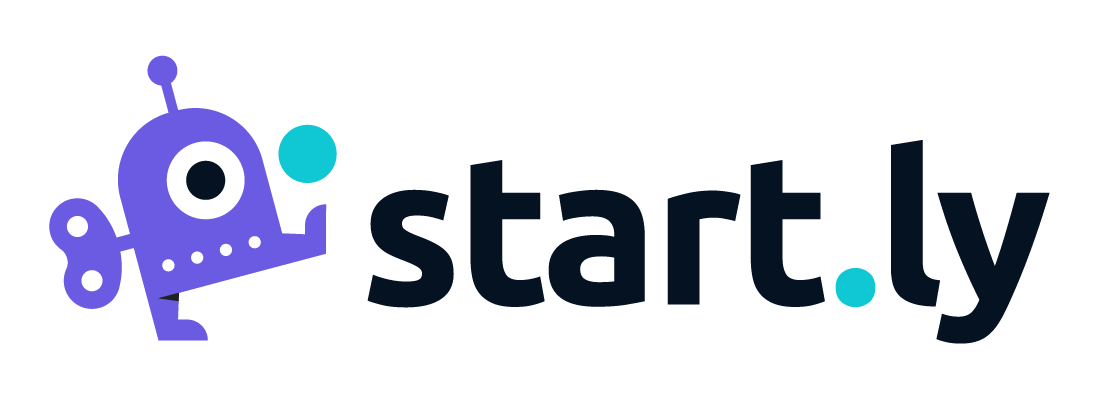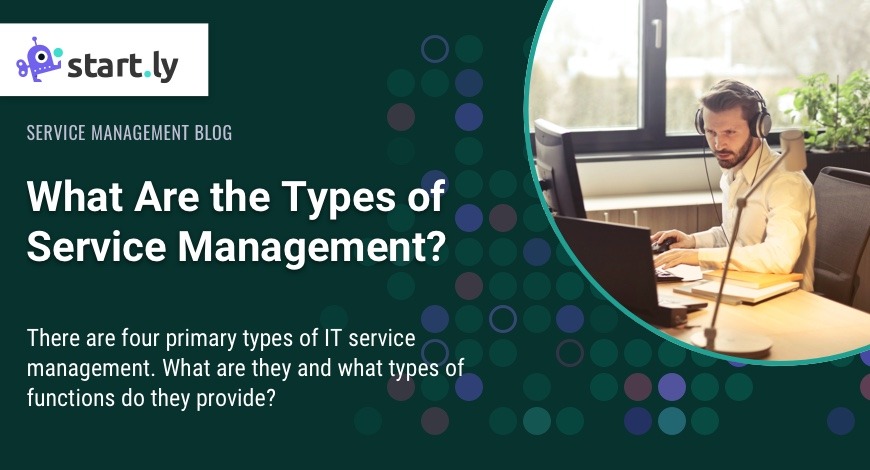IT service management (otherwise known as ITSM) is growing rapidly. Already a popular industry, the need for top-tier service management has only expanded as remote and hybrid work policies have become part of a new normal. As the need for ITSM increases, so too does the need for the right tools to manage and implement IT services for a multitude of clients, all with their own unique platforms and needs.
But what are the types of ITSM, and what kinds of services should ITSM tools provide? In our latest blog, we’re exploring the four primary types of IT service management and the functionality companies should expect to find with quality solutions.
What Is Meant by Service Management in IT?
IT service management is a term used to describe the design, organization, delivery, management, and maintenance of some or all of an organization’s IT needs. ITSM vendors provide end-to-end support to companies, which means they provide both short-term and long-term services. IT service management examples include the following:
- Building, deploying, and maintaining technology, including hardware and software solutions
- Helping end-users understand, use, and troubleshoot their technology
- Running help desk or ticketing systems
- Managing requests for changes and implementing them appropriately
The Types of Service Management in IT
While service management is used in many different industries, the primary types of IT service management include ticketing, asset management, change management, and knowledge base.
Ticketing
In ITSM, ticketing is an essential part of the day-to-day management of workflows and operations. Ticketing and help desk tools allow teams to track solutions, assign tasks to individuals, and monitor the scope of work for short- and long-term projects. At Startly, our ITSM ticketing tool offers the following functionalities:
- Organize ticket management, including the segmentation and prioritization of tickets, along with triaging, load balancing, and moving tickets—all with automated workflows and tagging features.
- View multi-channel ticketing traffic in a single location so teams can see all of their tickets, including problems, incidents, service requests, and more.
- Access integrated modules that allow you to take incoming tickets and funnel them on to asset management and change management.
- Simplify compliance auditing with features that automate activity log captures, timestamps, and more.
Asset Management
IT asset management, otherwise known as ITAM, refers to the process of tracking, upgrading, or disposing of an organization’s assets, including hardware and software. Assets are incredibly valuable to an organization, so proper monitoring and maintenance ensures that you get the most out of them. The best asset management solutions include:
- Integrated tracking codes with UPS, FedEx, and DHS so you can know where your assets are and when you’ll receive them.
- Accelerated asset building and configuration which expedites the process of knowledge-sharing, build processes, handoff, and delivery.
- Embedded asset build instructions that can be built directly into a workflow to reduce errors and improve visibility.
- Ticket closure only when the full process is complete, which allows full visibility for key team members to stay in the loop at every stage.
Change Management
Change management is a systematic approach to rolling out updates to systems and services. Change management underscores the importance of service management; it helps to avoid workflow disruptions and outages as much as possible to ensure end-users can continue working as normal. Organizations often establish an ITSM process flow that covers the following stages:
- Change submission, where someone requests a change be made to an existing system.
- Planning, where the team breaks down the change request and develops a plan. The plan should include expected outcomes, timelines, and any testing requirements.
- Scheduling, where the team decides when the change will be worked on and when it will be released.
- Risk analysis, where the team looks into potential risks and how to mitigate them.
- Approval, which is when necessary stakeholders sign off on the change.
- Implementation, which is when the change is actually applied to the system.
- Review, where the team and any other stakeholders review the change to ensure everything is working as expected.
Knowledge Base
A knowledge base is a self-serve compilation of information about a product, service, or topic. Knowledge bases are an essential part of knowledge management, which is one of the ITIL service management processes for ensuring that stakeholders can access the right information when they need it. Knowledge management is just one example of quality service management in IT. It helps teams provide:
- Value, by ensuring that knowledge can be accessed by the right people when they need it.
- Collaboration, as teams can use shared knowledge and resources to work together, innovate, and grow.
- Consistency, as everyone has access to the same information.
At Startly, our knowledge base tool allows you to build out a unique knowledge base for each one of your clients, ensuring that you can provide high-quality service to them day in and day out.
Startly: ITSM Solutions from Start to Finish
Are you looking for an end-to-end software solution for your ITSM needs? Look no further than Startly. At Startly, our platform provides a full suite of services to implement ITSM solutions, including ticketing to asset management, change management, and knowledge management, for each one of your clients.
We know ITSM may be just one of your needs, though. That’s why our platform provides functionality for tasks like time and expense tracking, project management, organizational governance, and analytics and insights. You can truly do it all with Startly’s all-in-one platform.
Ready to learn more? Reach out to us today to get going with Startly.

